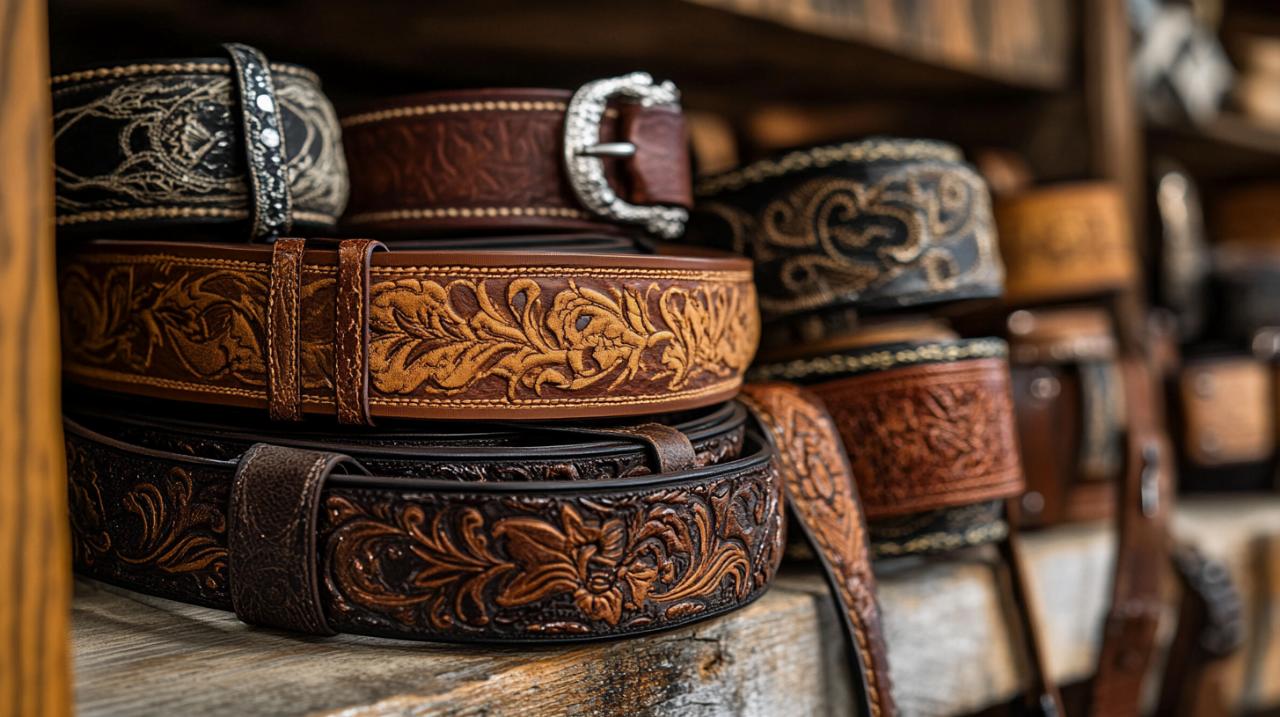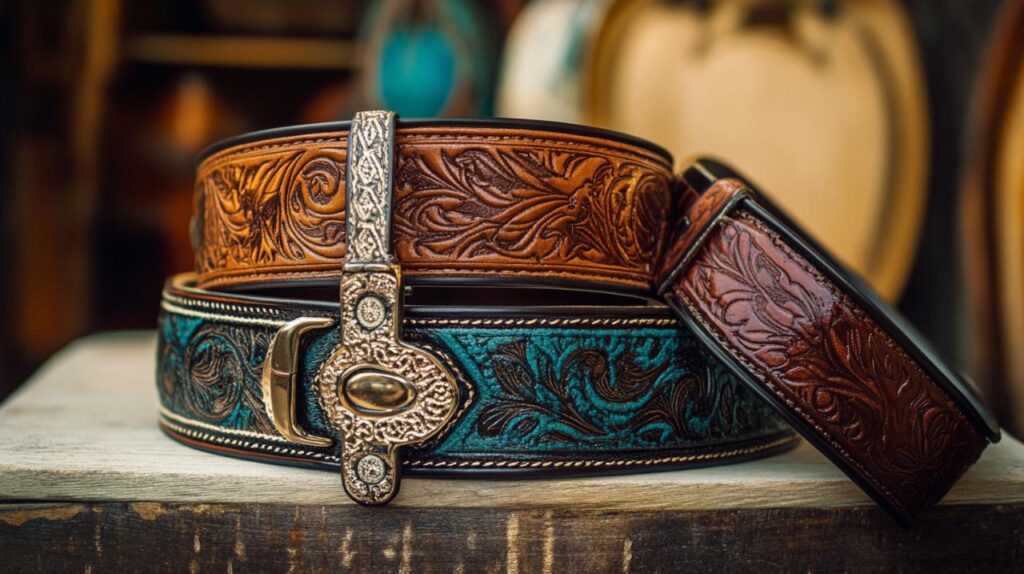Western belts have steadily gained recognition as a statement piece in men’s fashion, transcending their traditional roots to become a versatile accessory suitable for both casual and dressy occasions. These distinctive leather belts, often adorned with intricate buckle designs and hand-tooled details, reflect a heritage of craftsmanship that dates back to the cowboys and rodeo riders who originally wore them for both function and style. Selecting an authentic handcrafted Western belt requires careful consideration of several key factors, from the quality of the leather and the precision of the construction to the authenticity of the buckle and decorative elements. Understanding these aspects ensures that you invest in a piece that not only enhances your wardrobe but also stands the test of time.
Understanding quality leather and craftsmanship
The foundation of any exceptional Western belt lies in the quality of the leather used and the skill with which it is crafted. Full-grain leather stands out as the most durable and sought-after material, prized for its natural texture and ability to develop a rich patina over time. When evaluating a belt, it is essential to examine the leather closely, feeling for a supple yet firm texture that indicates premium material. Genuine full-grain leather belts typically fall within a price range of eighty to one hundred and fifty pounds or more, reflecting the superior quality and longevity they offer. Conversely, belts priced below forty pounds often indicate the use of inferior materials, which may compromise durability and appearance. For those seeking a comprehensive selection of Western belts crafted from top-notch leather, it is advisable to visit ofertaplus website, where a variety of brands such as Sendra and Ariat showcase their commitment to quality. This retailer has been in business since 1948 and offers worldwide shipping, ensuring that enthusiasts from Barcelona to beyond can access authentic Western wear with ease.
Identifying premium leather materials
Recognising premium leather materials involves more than a cursory glance at the surface. Authentic Western belts are typically constructed from full-grain leather, which retains the hide’s natural grain and imperfections, lending each belt a unique character. This type of leather is not sanded or buffed, preserving its strength and ensuring it ages gracefully. When assessing a belt, look for a consistent grain pattern and a slightly uneven surface that indicates the leather has not been overly processed. Suede belts, while offering a different aesthetic, provide a softer texture and are ideal for casual settings, though they require more careful maintenance. The colour of the leather also plays a significant role in versatility; classic shades such as black and brown remain the most common and adaptable choices, while grey offers a contemporary alternative that pairs well with a range of outfits. Additionally, the finish of the leather should be smooth and even, free from excessive dyes or coatings that might mask inferior quality. High-quality leather belts often develop a natural sheen and character over time, a testament to the material’s authenticity and the care taken during its production.
Recognising proper construction techniques
Beyond the leather itself, the construction techniques employed in crafting a Western belt are critical indicators of its authenticity and durability. Proper stitching is one of the most visible signs of quality craftsmanship. Examine the seams closely; they should be tight, even, and free from loose threads or gaps. Many handcrafted belts feature double stitching along the edges, which not only enhances the belt’s strength but also adds a decorative element that complements the Western aesthetic. The edges of the belt should be burnished or finished smoothly, preventing fraying and ensuring a polished appearance. Another important aspect is the number and placement of adjustment holes. A well-constructed belt typically includes five to seven evenly spaced holes, allowing for flexibility in fit without compromising the belt’s structural integrity. The width of the belt also matters; casual Western belts are generally around one and a half inches wide, while dress belts may be slightly narrower, typically measuring one to one and a quarter inches. The hardware, including the buckle and any rivets or studs, should be securely attached and exhibit a finish that resists tarnishing. Attention to these construction details ensures that the belt not only looks authentic but also withstands the rigours of daily wear.
Evaluating buckle design and traditional western details

The buckle is perhaps the most defining feature of a Western belt, serving as both a functional fastener and a canvas for artistic expression. Authentic Western buckles are characterised by their intricate detailing and substantial presence, often featuring motifs inspired by rodeo culture, nature, or Southwestern symbolism. There are primarily two types of buckles to consider: the larger anchor buckles and the more traditional pin buckles. Anchor buckles, with their bold and ornate designs, make a striking statement and are ideal for those looking to showcase their appreciation for Western heritage. Pin buckles, while more understated, still offer a range of decorative options and are suitable for both casual and dressy occasions. When evaluating a buckle, pay attention to the quality of the metalwork; genuine silver or nickel finishes are preferred for their durability and lustre. Some buckles may incorporate rhinestones or other embellishments, adding a touch of sparkle that enhances the belt’s visual appeal. It is also worth noting that brands such as Crumrine Silversmiths and Montana Silversmiths are renowned for their high-quality buckles, each piece reflecting meticulous craftsmanship and attention to detail. A well-chosen buckle not only complements the leather but also elevates the overall aesthetic of the belt.
Examining authentic buckle characteristics
Authentic buckle characteristics extend beyond mere aesthetics to include functionality and durability. The buckle should attach securely to the belt strap, with a mechanism that allows for smooth adjustment and a firm hold. Inspect the back of the buckle for signs of quality, such as a solid construction and a finish that matches the front. The prong, or the pin that passes through the adjustment holes, should be sturdy and free from excessive wear or bending. High-quality buckles often feature engraving or embossing that reflects traditional Western themes, such as cattle, horses, or geometric patterns inspired by Native American art. The weight of the buckle is another indicator; a substantial buckle typically signifies better materials and craftsmanship, although it should not be so heavy as to cause the belt to sag. Some buckles are designed to be interchangeable, allowing you to customise your belt’s appearance to suit different occasions. This versatility is a hallmark of authentic Western belts, as it reflects the practical needs of those who originally wore them. Whether opting for a silver buckle with intricate detailing or a more minimalist design, ensuring that the buckle is of superior quality is essential for both style and longevity.
Appreciating hand-tooling and decorative elements
Hand-tooling and decorative elements are what truly set handcrafted Western belts apart from mass-produced alternatives. Hand-tooling involves the meticulous process of stamping or carving designs into the leather surface, creating patterns that range from floral motifs to geometric shapes and Western-inspired imagery. This artisanal technique requires skill and patience, with each belt showcasing the unique touch of the craftsman. When examining a tooled belt, look for depth and clarity in the design; the impressions should be crisp and well-defined, indicating careful work. Studded belts, which feature metal studs or conchos arranged in decorative patterns, offer another layer of visual interest and are popular in both Western and alternative fashion circles. These embellishments should be securely fastened to the leather, with no signs of looseness or tarnishing. Some Western belts also incorporate braiding or weaving, adding texture and a sense of artisanal craftsmanship. The combination of hand-tooling and decorative elements not only enhances the belt’s aesthetic appeal but also reflects the rich tradition of Western artistry. Such details transform a simple accessory into a piece of wearable art, making it a valuable addition to any wardrobe. For those who appreciate the finer points of handcrafted goods, seeking out belts with these features ensures a purchase that is both stylish and authentic.

